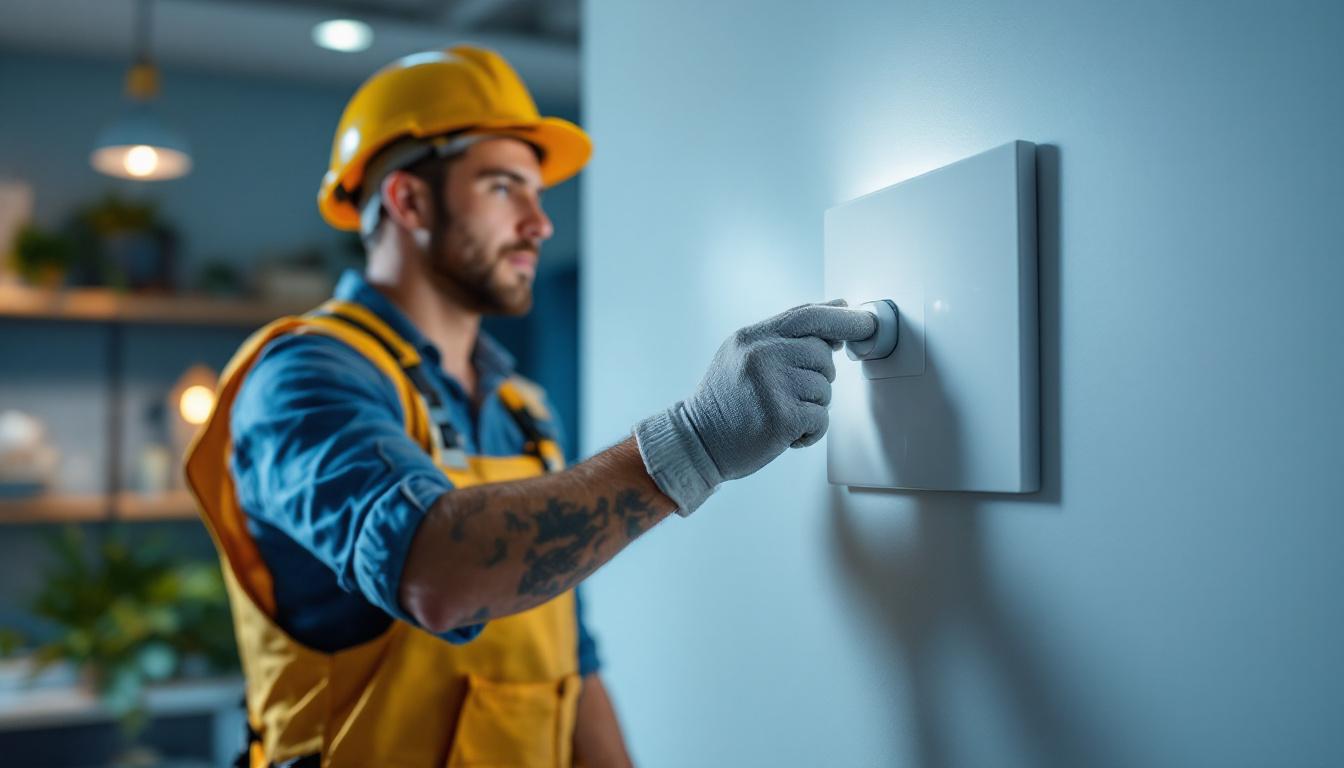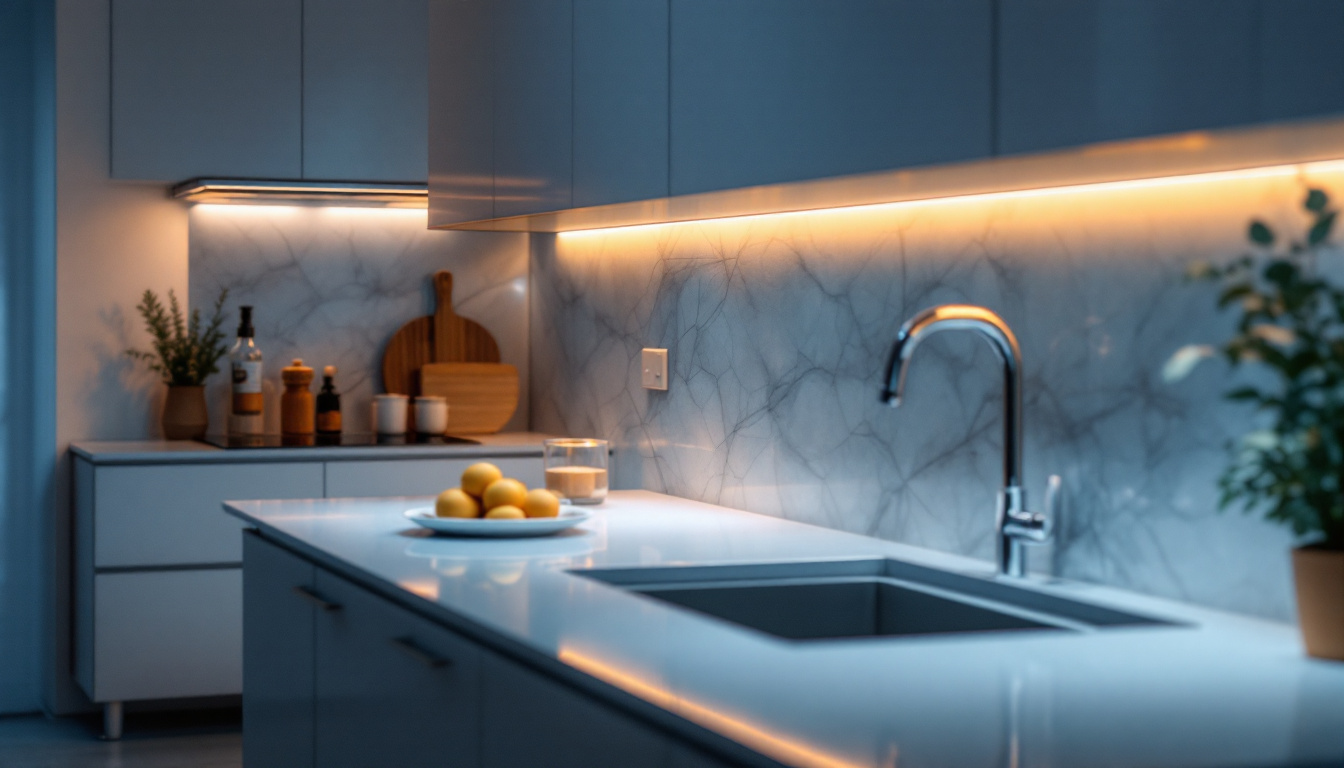
In the world of electrical installations, light switches play a crucial role in the functionality and aesthetics of residential and commercial spaces. For lighting contractors, understanding the intricacies of light switches is essential for delivering quality service and ensuring customer satisfaction. This comprehensive guide delves into the various types of light switches, installation techniques, troubleshooting tips, and best practices that every lighting contractor should know.
Light switches come in various forms, each designed for specific applications and user preferences. Familiarity with these types can enhance a contractor’s ability to recommend the right switch for a given project.
The standard toggle switch is perhaps the most recognizable type of light switch. It features a simple on/off mechanism, making it easy for users to operate. Available in single-pole and three-way configurations, toggle switches are versatile and widely used in residential settings.
When installing toggle switches, it’s essential to ensure that the wiring is correctly configured to avoid issues with functionality. The simplicity of these switches makes them a favorite among homeowners, but contractors should also be aware of the various styles and finishes available to match different interior designs. From sleek modern designs to vintage-inspired options, the aesthetic appeal of toggle switches can complement the overall decor of a room, enhancing its visual appeal.
Dimmers offer a level of control over lighting that standard switches cannot provide. They allow users to adjust the brightness of their lights, creating ambiance and saving energy. Dimmers come in various types, including rotary, slide, and digital options.
When selecting dimmers, contractors should consider the type of lighting being used, as not all bulbs are compatible with dimming technology. Moreover, proper installation is crucial to ensure that the dimmer functions correctly and does not cause flickering or buzzing. Additionally, dimmers can be particularly beneficial in spaces like dining rooms or home theaters, where adjustable lighting can significantly enhance the experience. Educating clients about the advantages of dimming capabilities can help them appreciate the value of investing in these versatile switches.
With the rise of smart home technology, smart switches have become increasingly popular. These switches can be controlled remotely via smartphones or integrated with voice assistants, offering convenience and energy efficiency.
For lighting contractors, understanding the installation process and compatibility with existing systems is vital. Smart switches often require a stable Wi-Fi connection and may involve additional setup, such as configuring apps or connecting to hubs. Knowledge of these systems can set a contractor apart in a competitive market. Furthermore, smart switches can be programmed to operate on schedules, allowing homeowners to automate their lighting for security or energy savings. As the smart home trend continues to grow, contractors who can navigate the complexities of these technologies will find themselves in high demand, providing tailored solutions that meet the evolving needs of their clients.
Proper installation of light switches is fundamental to ensuring safety and functionality. This section outlines essential techniques that every lighting contractor should master.
Understanding the basics of electrical wiring is crucial for any lighting contractor. Familiarity with terms such as hot, neutral, and ground wires is essential. Typically, the hot wire carries the electrical current, while the neutral wire completes the circuit, and the ground wire provides safety against electrical surges.
When installing a light switch, the contractor must correctly identify and connect these wires. Using wire nuts to secure connections and ensuring that all wires are properly insulated can prevent electrical hazards and ensure the longevity of the installation. Additionally, it is beneficial to familiarize oneself with local electrical codes and regulations, as these can dictate specific requirements for wire types, gauge, and installation methods, ensuring compliance and safety in every project.
Mounting the switch correctly is another critical aspect of installation. The switch should be positioned at a height that is accessible for users, typically around 48 inches from the floor. Additionally, ensuring that the switch is level and securely fastened to the electrical box is vital for both functionality and aesthetics.
Contractors should also consider the surrounding environment. For instance, in areas prone to moisture, such as bathrooms or kitchens, using weatherproof switches can enhance safety and durability. In addition to moisture considerations, the choice of switch style can also impact user experience; for example, rocker switches may be easier to operate for individuals with limited dexterity compared to traditional toggle switches, making thoughtful selection an important part of the installation process.
After installation, testing the switch is a crucial step that should not be overlooked. This involves turning the power back on and checking the switch’s functionality. A simple test can reveal issues such as incorrect wiring or faulty components.
Using a multimeter can help contractors verify that the switch is operating correctly and that there are no electrical faults. Ensuring that everything is functioning as intended before leaving the job site is essential for maintaining a professional reputation. Furthermore, it is advisable to educate clients on basic troubleshooting techniques, such as how to reset a tripped circuit breaker or replace a blown fuse, empowering them to handle minor issues that may arise after installation. This not only builds trust but also enhances customer satisfaction, as they feel more informed and capable in managing their electrical systems.
Even the most experienced contractors may encounter issues during or after the installation of light switches. Knowing how to troubleshoot common problems can save time and enhance client satisfaction. Understanding the nuances of electrical systems is crucial, as even minor oversights can lead to significant inconveniences for homeowners. By being well-versed in these troubleshooting techniques, contractors can not only resolve issues more efficiently but also build trust with their clients through effective communication and problem-solving.
Flickering lights can be a frustrating issue for homeowners. This problem may stem from a loose connection, a faulty switch, or incompatible bulbs. Contractors should first check the wiring connections to ensure they are secure. It’s also worth noting that flickering can sometimes be a sign of a larger electrical issue, such as fluctuations in the power supply, which may require further investigation.
If the wiring is intact, the next step is to examine the switch itself. Replacing a faulty switch can often resolve flickering issues. Additionally, ensuring that the bulbs used are compatible with the switch, especially in the case of dimmers, is essential. Contractors should educate homeowners about the importance of using quality bulbs and switches, as cheaper alternatives may not perform reliably over time. Providing guidance on selecting the right products can prevent future flickering and enhance the overall lighting experience in the home.
When a switch fails to operate, it can be due to various factors, including a tripped circuit breaker, faulty wiring, or a defective switch. Contractors should first check the circuit breaker to determine if it has tripped. If the breaker is intact, inspecting the wiring for any loose connections or damage is the next step. It’s also beneficial to remind clients about the importance of regular maintenance checks on their electrical systems, as wear and tear can lead to unexpected issues.
If all wiring appears to be in order, the switch itself may need to be replaced. Keeping a selection of common switches on hand can expedite repairs and enhance customer service. Additionally, contractors might consider discussing the benefits of smart switches with clients, which can offer enhanced functionality and convenience, potentially reducing the frequency of such issues in the future.
Overheating switches can pose a significant safety risk and should be addressed immediately. This issue may arise from overloading the switch with too many devices or using a switch that is not rated for the load it is handling. Contractors should assess the load on the switch and replace it with one that can handle the required wattage. It’s also crucial to educate homeowners about the importance of not exceeding the recommended load, as this can lead to not only overheating but also potential fire hazards.
Additionally, ensuring that the switch is installed in a well-ventilated area can help prevent overheating. Contractors should also consider recommending the installation of thermal protection devices, which can automatically shut off power to the switch in case of overheating, providing an extra layer of safety. By taking these proactive measures, contractors can help ensure that their clients’ homes remain safe and functional, while also demonstrating their commitment to quality workmanship and customer care.
To excel in the field, lighting contractors should adopt best practices that enhance their service quality and client relationships.
The lighting industry is continually evolving, with new technologies and products emerging regularly. Staying informed about the latest advancements, such as energy-efficient lighting and smart home systems, can give contractors a competitive edge.
Attending industry trade shows, participating in workshops, and subscribing to relevant publications can help contractors remain knowledgeable about current trends and innovations.
Customer service is a cornerstone of any successful business. Lighting contractors should prioritize clear communication, responsiveness, and professionalism in all interactions. Taking the time to understand a client’s needs and preferences can lead to more tailored solutions and increased satisfaction.
Following up after an installation to ensure everything is functioning correctly and addressing any concerns promptly can foster long-term relationships and encourage referrals.
Safety should always be a top priority for lighting contractors. Adhering to local electrical codes and safety regulations is essential to ensure the safety of both the contractor and the client. Regularly reviewing safety practices and participating in training can help maintain high standards.
Using appropriate personal protective equipment (PPE) and ensuring that all tools and materials are in good condition is also crucial. A commitment to safety not only protects individuals but also enhances the contractor’s reputation in the industry.
Understanding the various types of light switches, mastering installation techniques, and being equipped to troubleshoot common issues are essential skills for lighting contractors. By following best practices and staying informed about industry trends, contractors can enhance their service quality and build lasting relationships with clients.
As the demand for innovative lighting solutions continues to grow, being knowledgeable and skilled in the realm of light switches will empower contractors to meet and exceed client expectations. Embracing this knowledge ensures not only the success of individual projects but also the long-term success of a lighting contracting business.
Ready to elevate your lighting projects with the highest quality switches and lighting accessories? Look no further than LumenWholesale. Our extensive selection of spec-grade lighting products is designed to meet the needs of discerning contractors like you. With unbeatable wholesale prices and the convenience of free shipping on bulk orders, you can ensure your projects shine without breaking the bank. Say goodbye to inflated markups and hello to reliable, high-performance lighting that enhances every space. Discover wholesale lighting at the best value today and make LumenWholesale your go-to source for all your lighting needs.

Discover essential best practices for lighting contractors using cable pulling machines.

Discover the transformative impact of LED under cabinet lighting in modern installations.

Explore the strategic advantages for lighting contractors in concealing outdoor lights.

Discover the essentials of isolated ground receptacles in just five minutes.